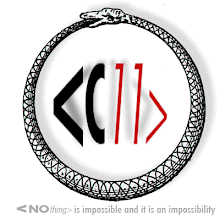It is now becoming clear that within the USA & UK at least there relatively large numbers of maireener shell necklaces coming up for sale on eBAY. Many of these necklaces appear to have been dyed and with colours not too dissimilar to the colours contemporary fresh water pears are dyed.
Whatever these necklaces qualify for quintessential Tasmaniana status given the various layers of histories these necklace carry.
These necklaces also appear in Australia and reflect to some extent the nature of and the scale of the Tasmania Shell Necklace Industry – albeit an industry not well documented except by Earnest Mawle 1918 and quite briefly by him.
The image above is a sampling of maireener shell necklaces that have recently come up for sale on eBAY except the the white sample. It seems reasonable to assume that – but on necessarily safe to do so – given 'the industry' may have needed to dye the lighter coloured shells – possibly the lower priced shells – to win a market for them. The 'cream/yellow' shells may also have been dyed or they way be examples of shells that were sometimes dyed.
Often this industry's output has been mistaken for the Tasmanian Aboriginal people's necklaces and there is a strong case to be put that the commercially produced necklaces mimicked the Tasmanian Aboriginal people's necklaces. Recent research brings to light information that suggests this shell necklace 'industry' was a proportion previously not well know if at all ... to read more click here ... or here
Whatever these necklaces qualify for quintessential Tasmaniana status given the various layers of histories these necklace carry.
These necklaces also appear in Australia and reflect to some extent the nature of and the scale of the Tasmania Shell Necklace Industry – albeit an industry not well documented except by Earnest Mawle 1918 and quite briefly by him.
The image above is a sampling of maireener shell necklaces that have recently come up for sale on eBAY except the the white sample. It seems reasonable to assume that – but on necessarily safe to do so – given 'the industry' may have needed to dye the lighter coloured shells – possibly the lower priced shells – to win a market for them. The 'cream/yellow' shells may also have been dyed or they way be examples of shells that were sometimes dyed.
Often this industry's output has been mistaken for the Tasmanian Aboriginal people's necklaces and there is a strong case to be put that the commercially produced necklaces mimicked the Tasmanian Aboriginal people's necklaces. Recent research brings to light information that suggests this shell necklace 'industry' was a proportion previously not well know if at all ... to read more click here ... or here








